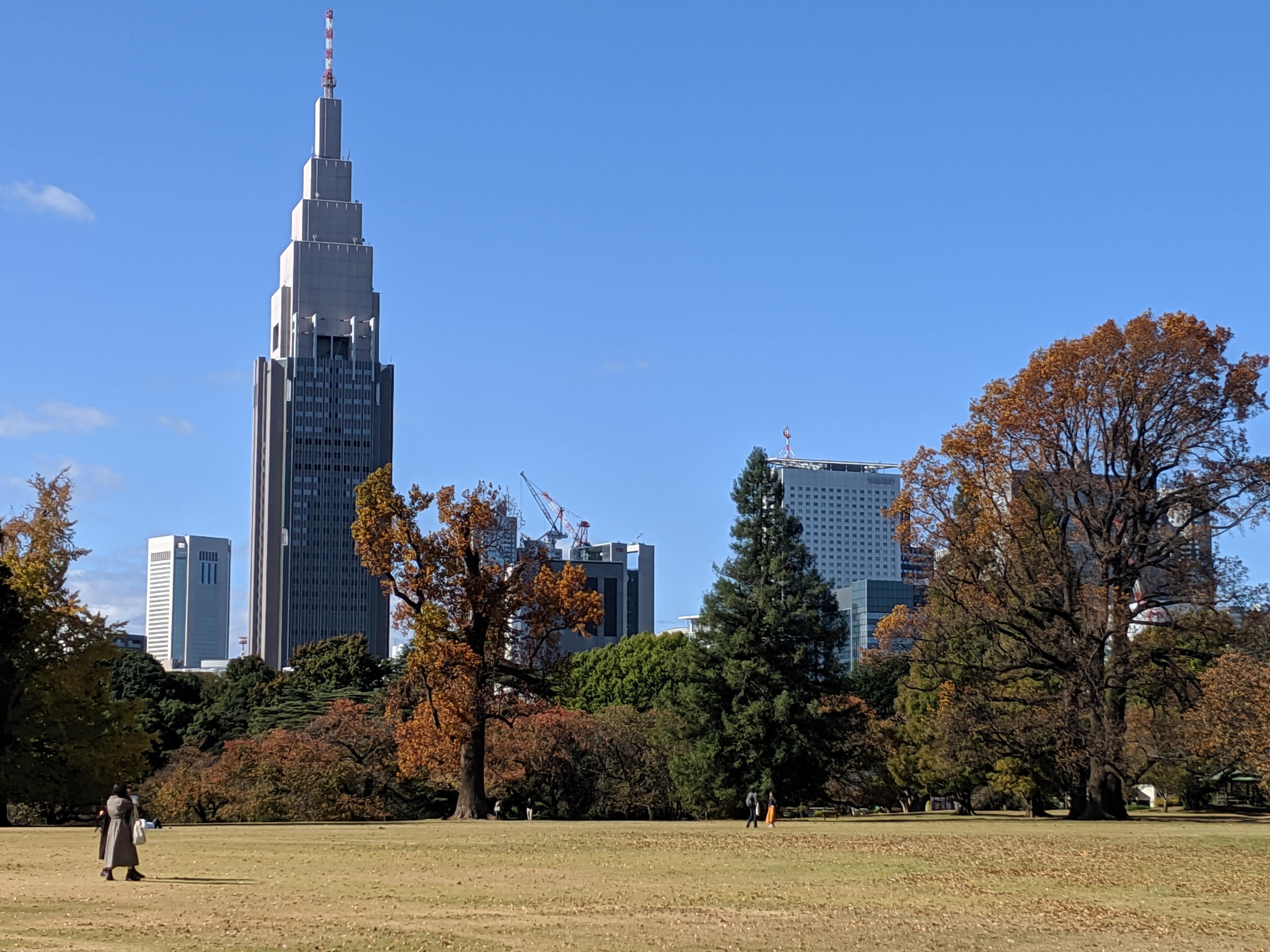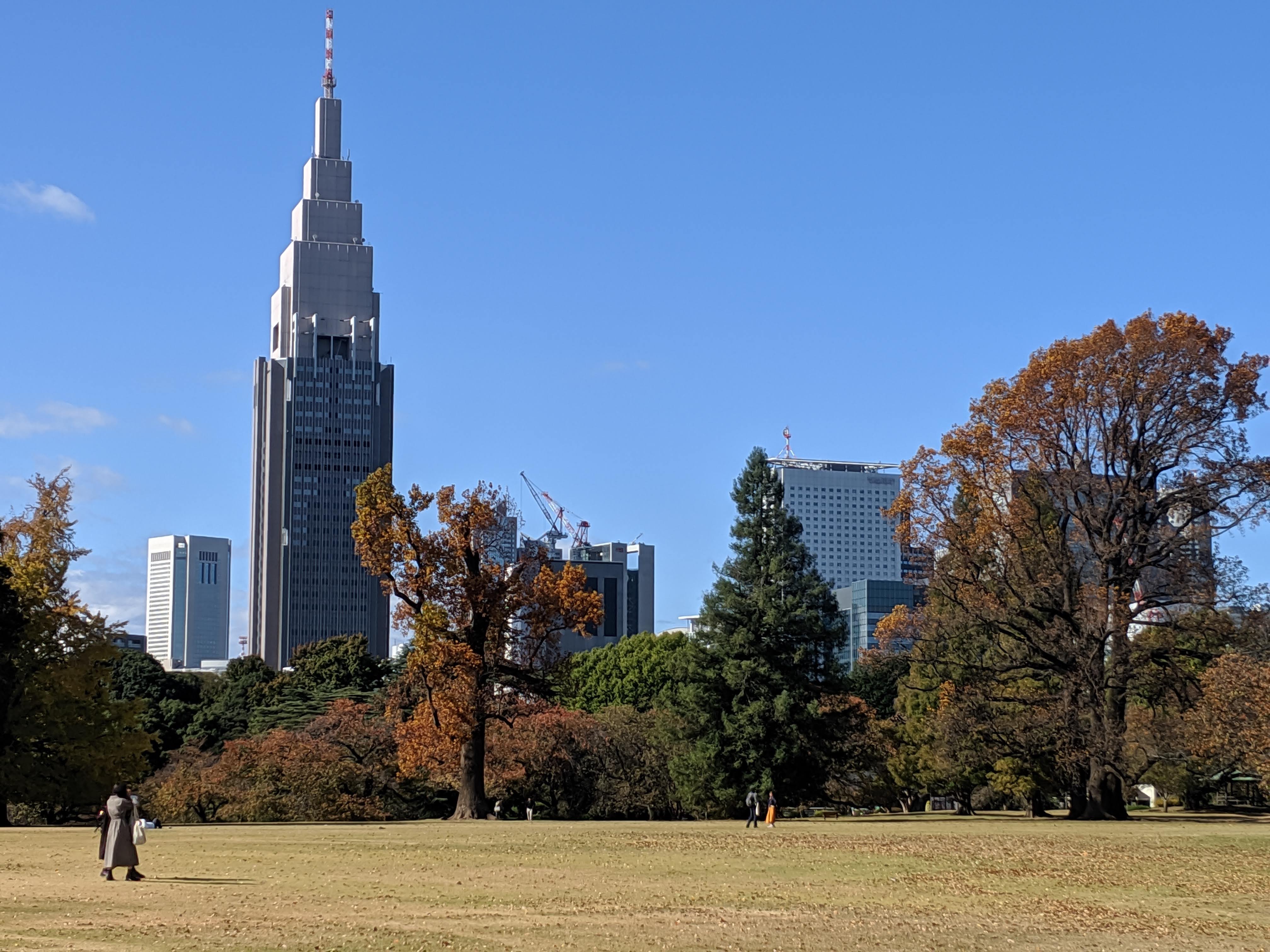I would like to introduce the beautiful Autumn Leaves viewing spots in Tokyo as following famous area for your reference.
(1) Hibiya Park
(2) Ueno Onshi Park
(3) Hamarikyu Onshi Teien
(4) Imperial Palace & East Garden
(5) Avenue of Gingko trees in the outer garden of Meiji shrine (Jingu Gaien)
(6) Rikugien Gardens
(7) Kyu-Furukawa Garden
(8) Shinjuku Gyoen
(1) Hibiya Park:
The land of Hibiya park used to be occupied by many high-ranking feudal loads during the Edo period (1603 – 1867). The park was redeveloped and designated as the first Westernized park in Japan. It was opened in 1903 as a pioneer of modern city park. The great fountain as the symbol of the park was installed in the center of the park in 1961. Visitors can enjoy seasonal flowers and plants through a year, such as cherry-blossoms in spring and autumn color leaves in fall. There are two ponds in this park, one is “Shinji-Ike” which was originally part of an old moat that surrounded the Edo castle. The other is “Kumogata-Ike” which has a large crane fountain in the center.
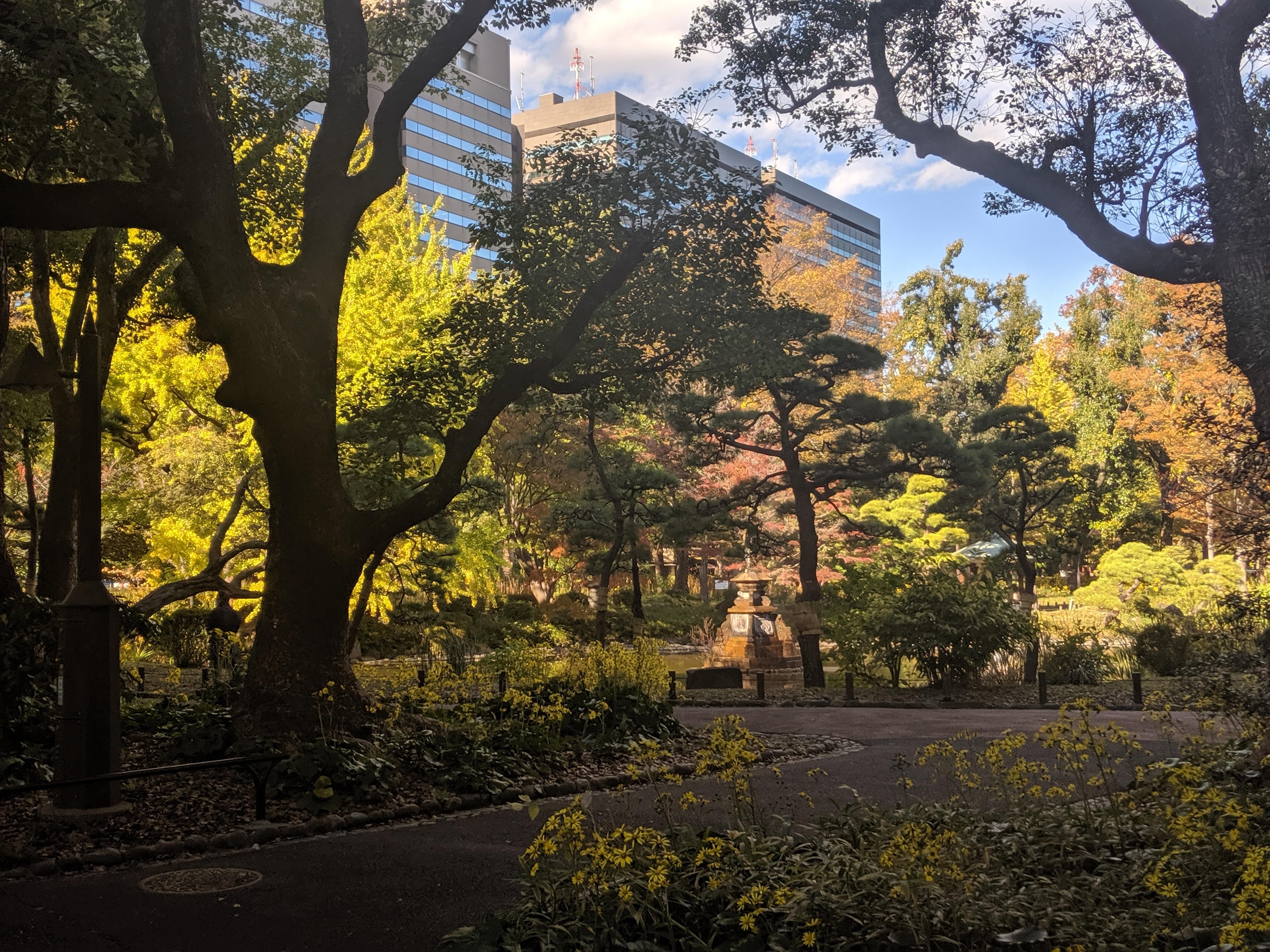

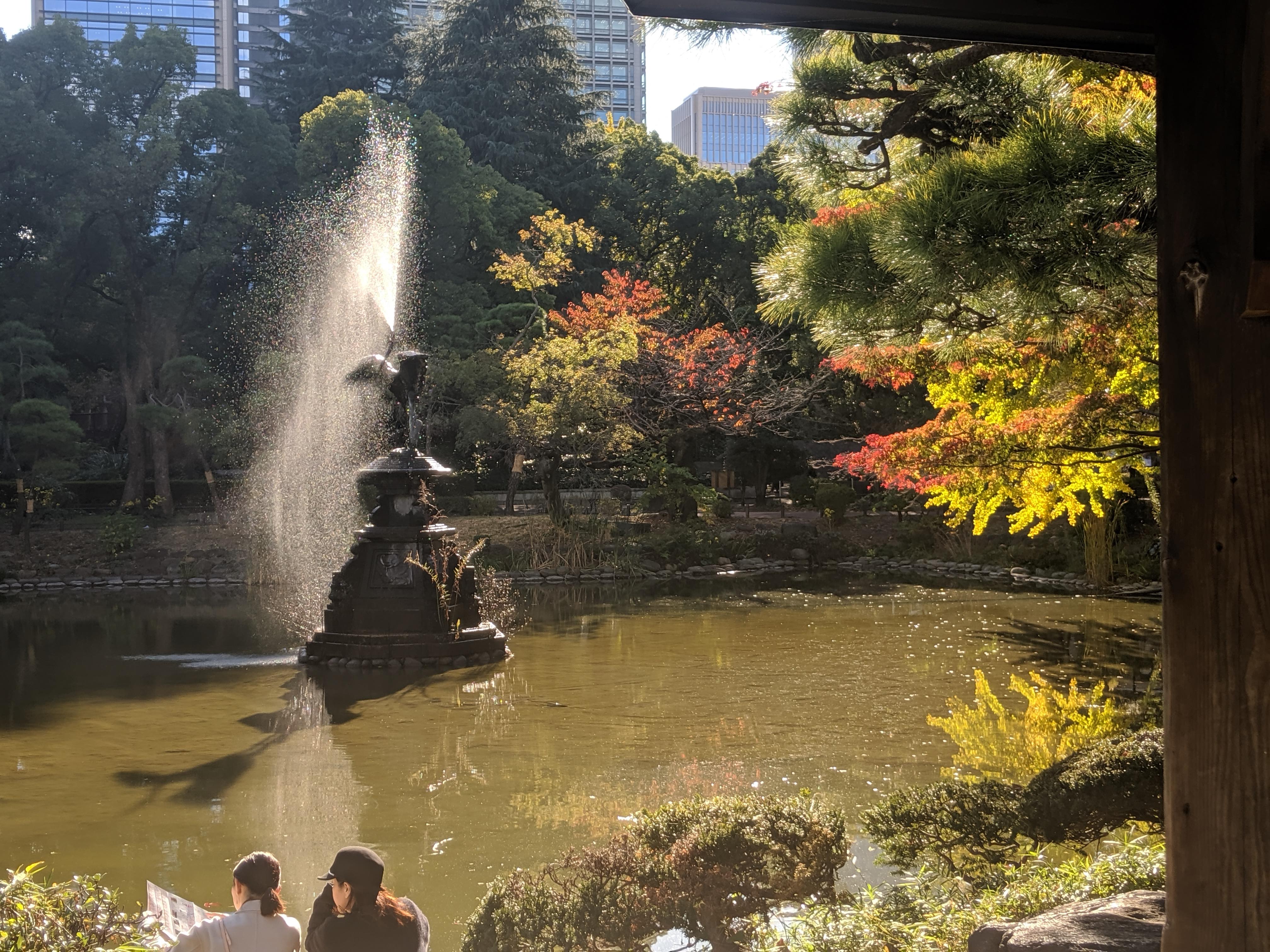
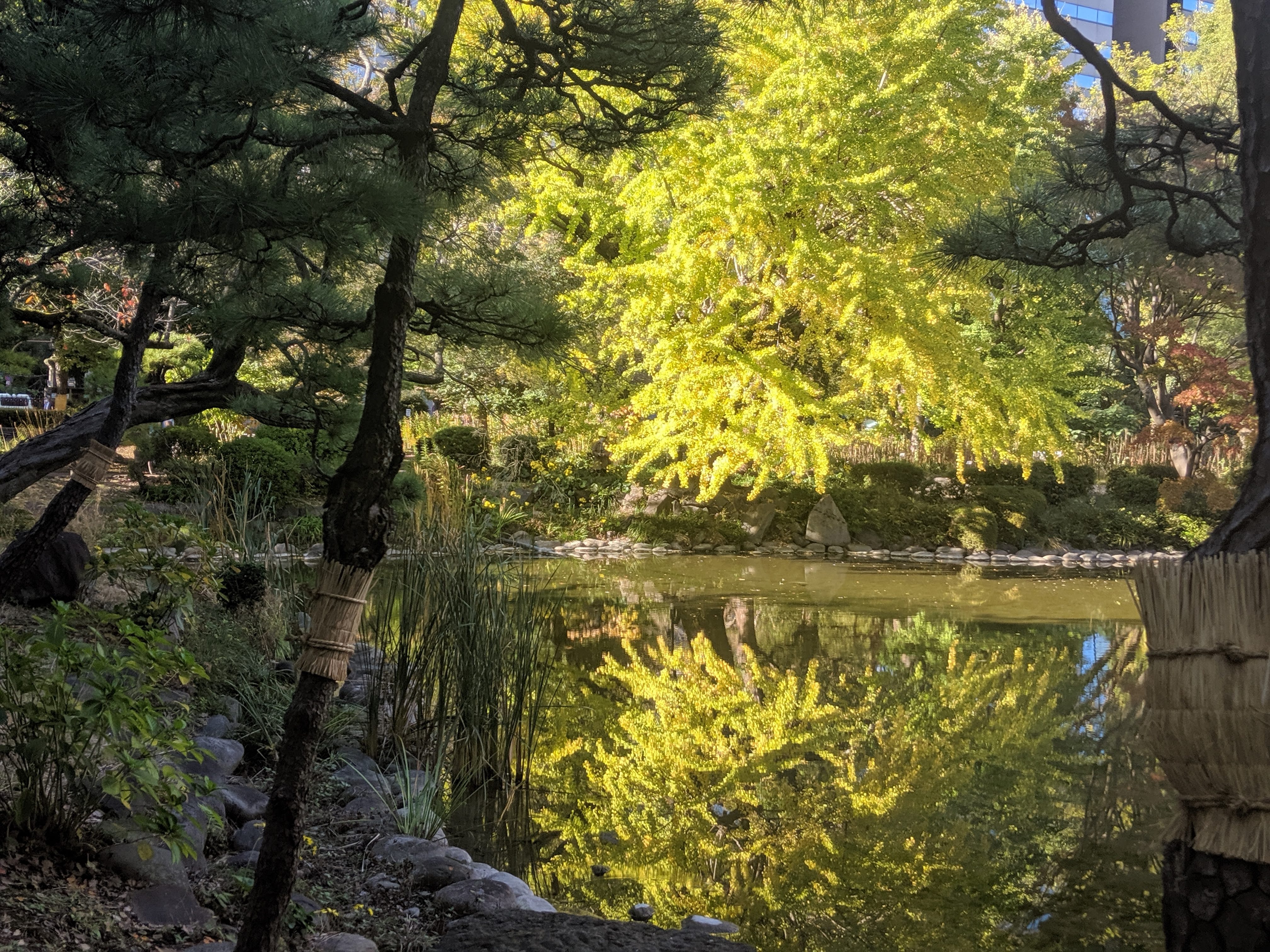
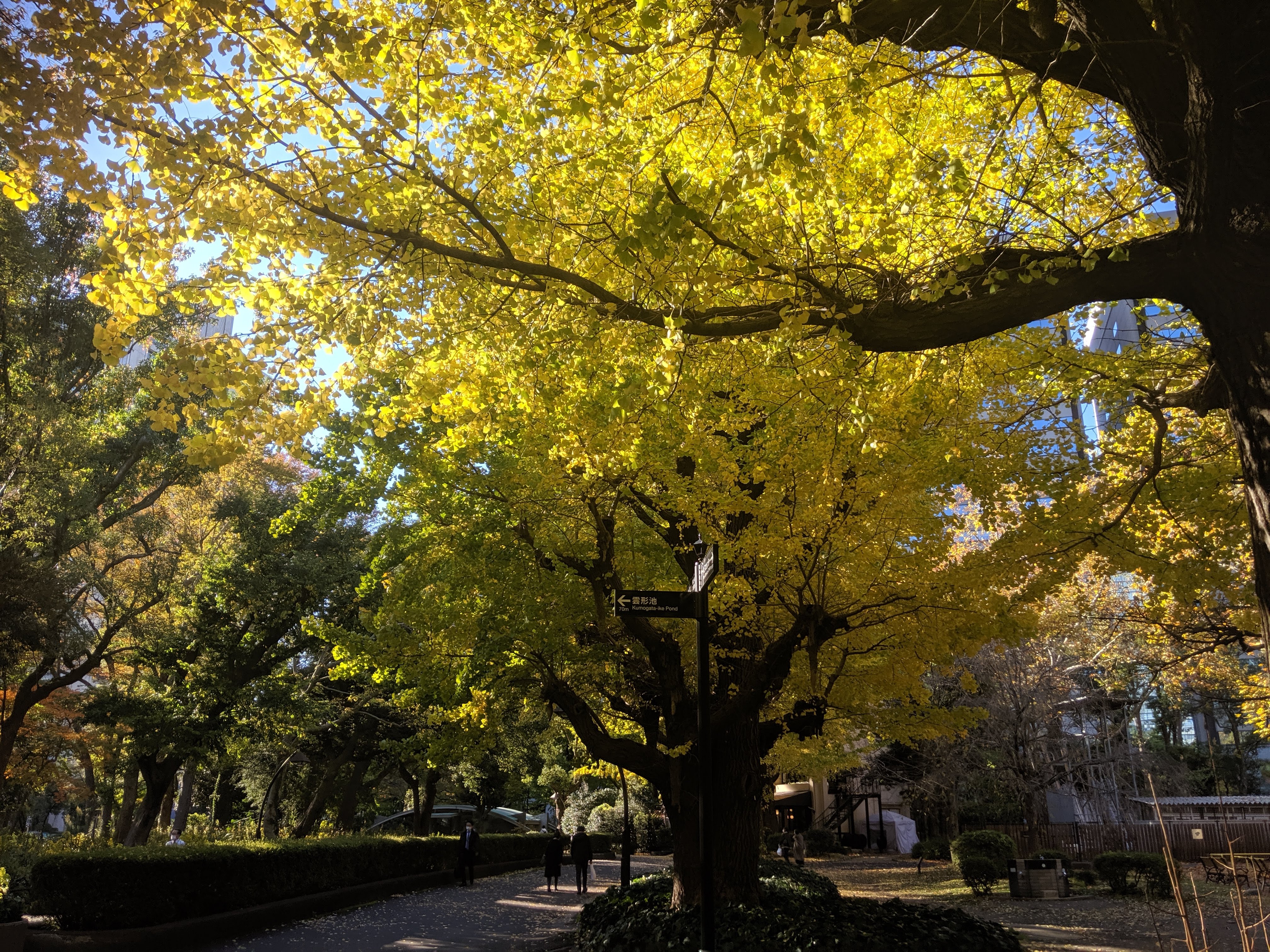
(2) Ueno Onshi Park:
Ueno Onshi park is one of the largest park in Tokyo which has opened since 140 years ago where there are various tour spots such as a large pond, a lots of museums, a five stories pagoda, temples, zoo and so-on.
From the middle of November to the beginning of December every year, the trees such as Japanese zelkova, ginkgo, camphor and so-on have been beautifully colored as yellow and red.
Ginkgo trees along the S-shaped garden path turn yellow in Autumn leaves season. You can enjoy beautifully colored ginkgo, maple and zelkova.
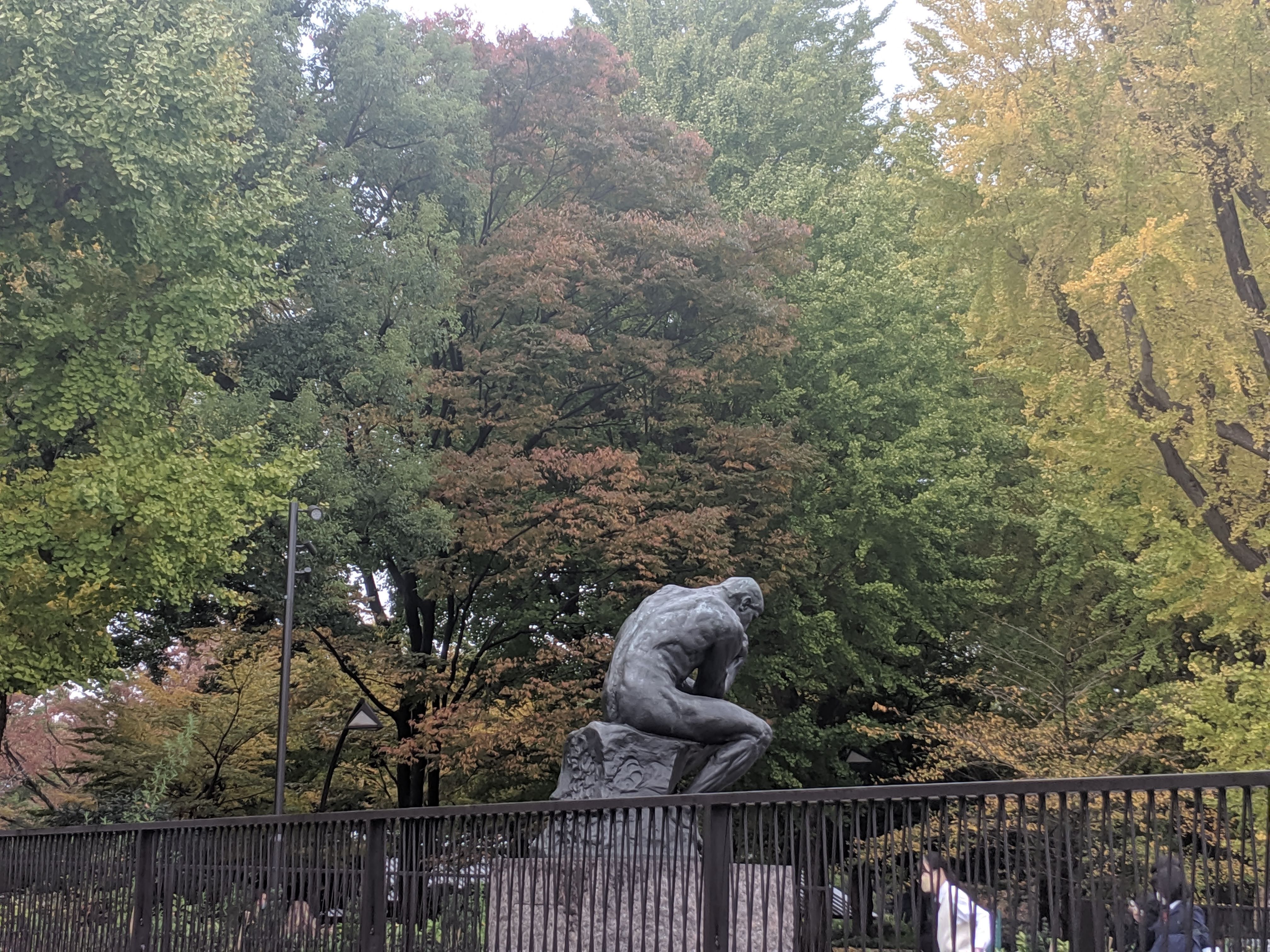

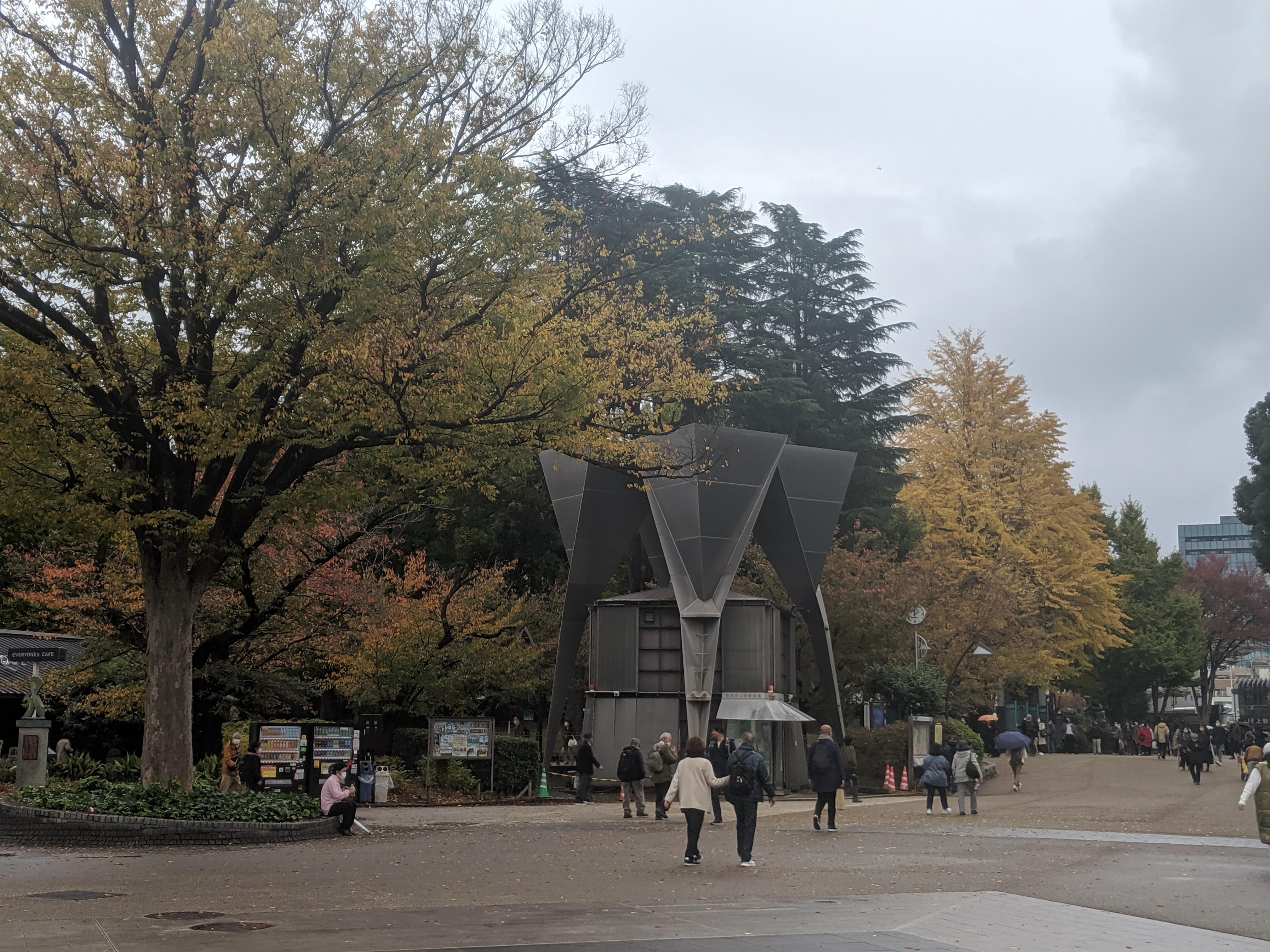
(3) Hamarikyu Onshi Teien:
The present garden was completed during Edo Era of 11th generation of Tokugawa Shogunate.
In 1870 after Meiji restoration, the garden served as a detached palace for the Imperial family. The garden was damaged by both the Great Kanto earthquake in 1923 and the bombings during World War2 in 1945. The garden was renewed in 1946 and has become the general public garden. You can feel the nice blending of the traditional Japanese garden and the high rises of the Shiodome business buildings.
From the middle of November to the beginning of December every year, you can enjoy the beautifully colored Autum leaves as yellow and red for Maples, gobies, and trident maples trees.
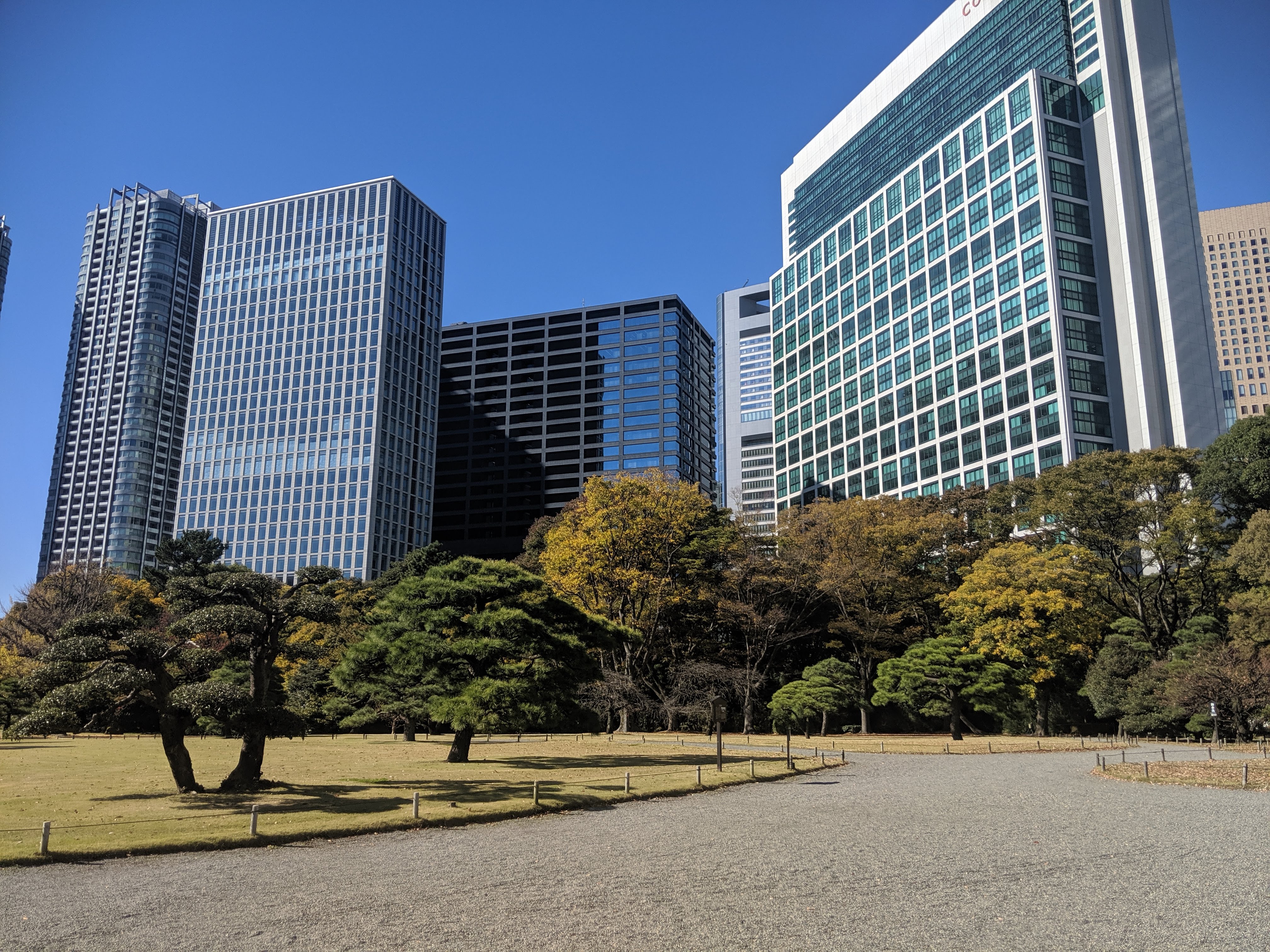
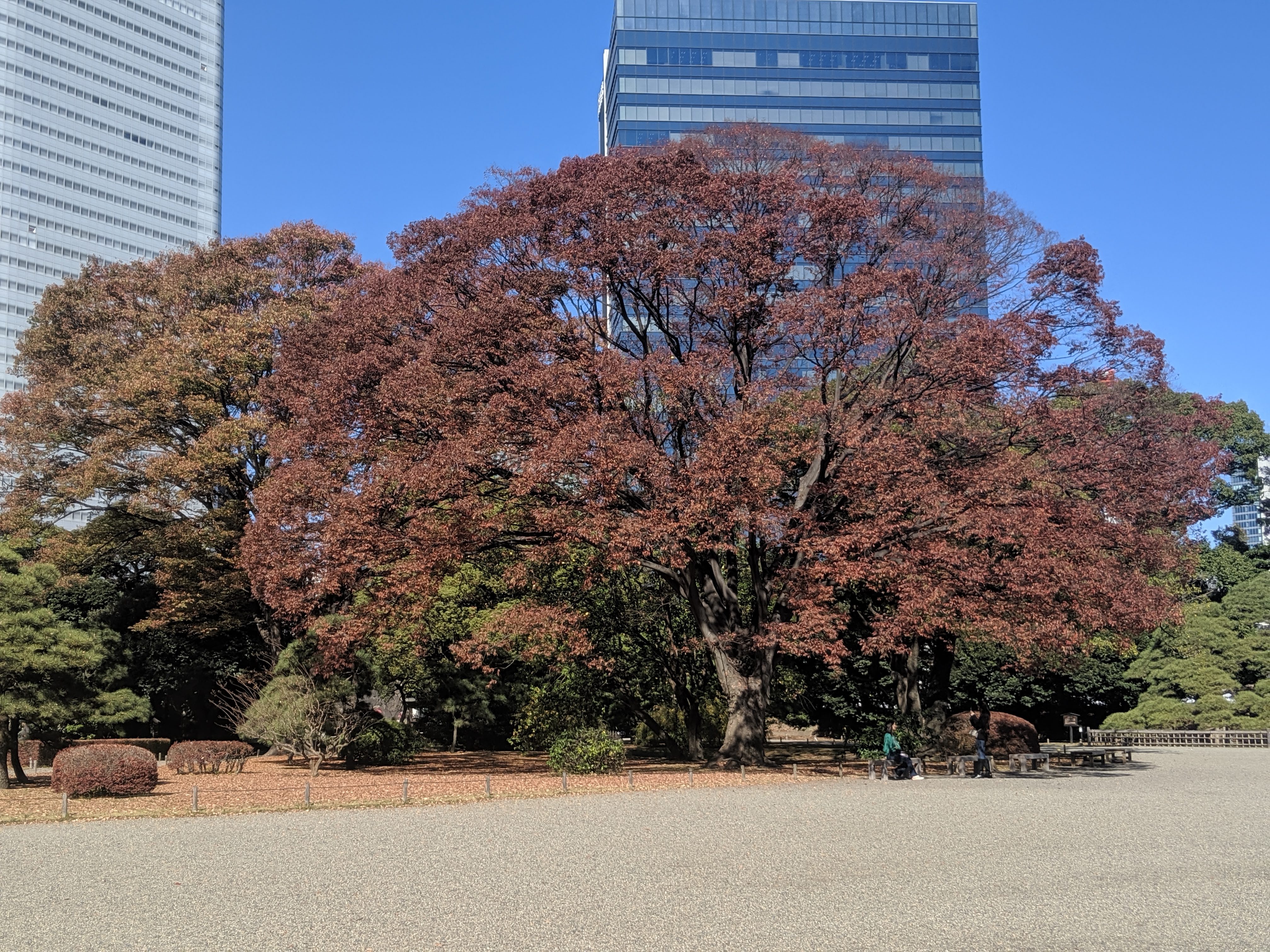
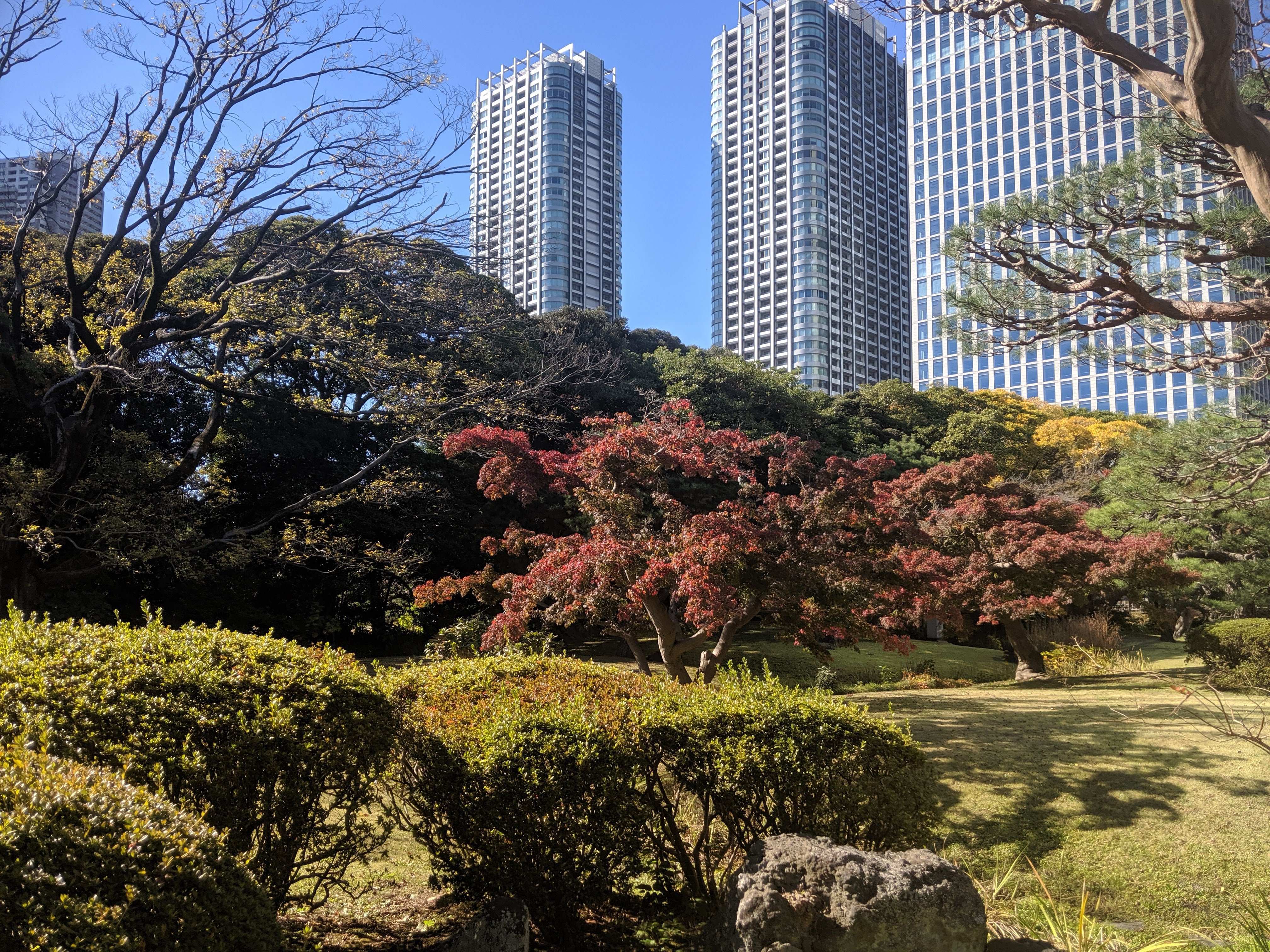
(4) Imperial Palace & East Garden:
The Edo Castle, formerly the Tokugawa Family’s residence, became the Imperial Palace as the Emperor had moved to Tokyo from Kyoto Imperial Palace after the Meiji Restoration. The main residence of Emperor opens only twice a year such as the beginning of every year and the birthday of the emperor. In the East Garden of the Imperial Palace, we can see two main spots such as the main tower remain of the former Edo castle and the Ninomaru Garden. Many kinds of seasonal flowers and plants are planted in the garden. You can enjoy the scenery in all year around. It's very a beautiful Japanese garden.
In Autumn leaves season, Konara oak, sawtooth oak, maple and so-on are planted in Ninomaru Miscellaneous Forest and you can enjoy the autumn leaves of them.
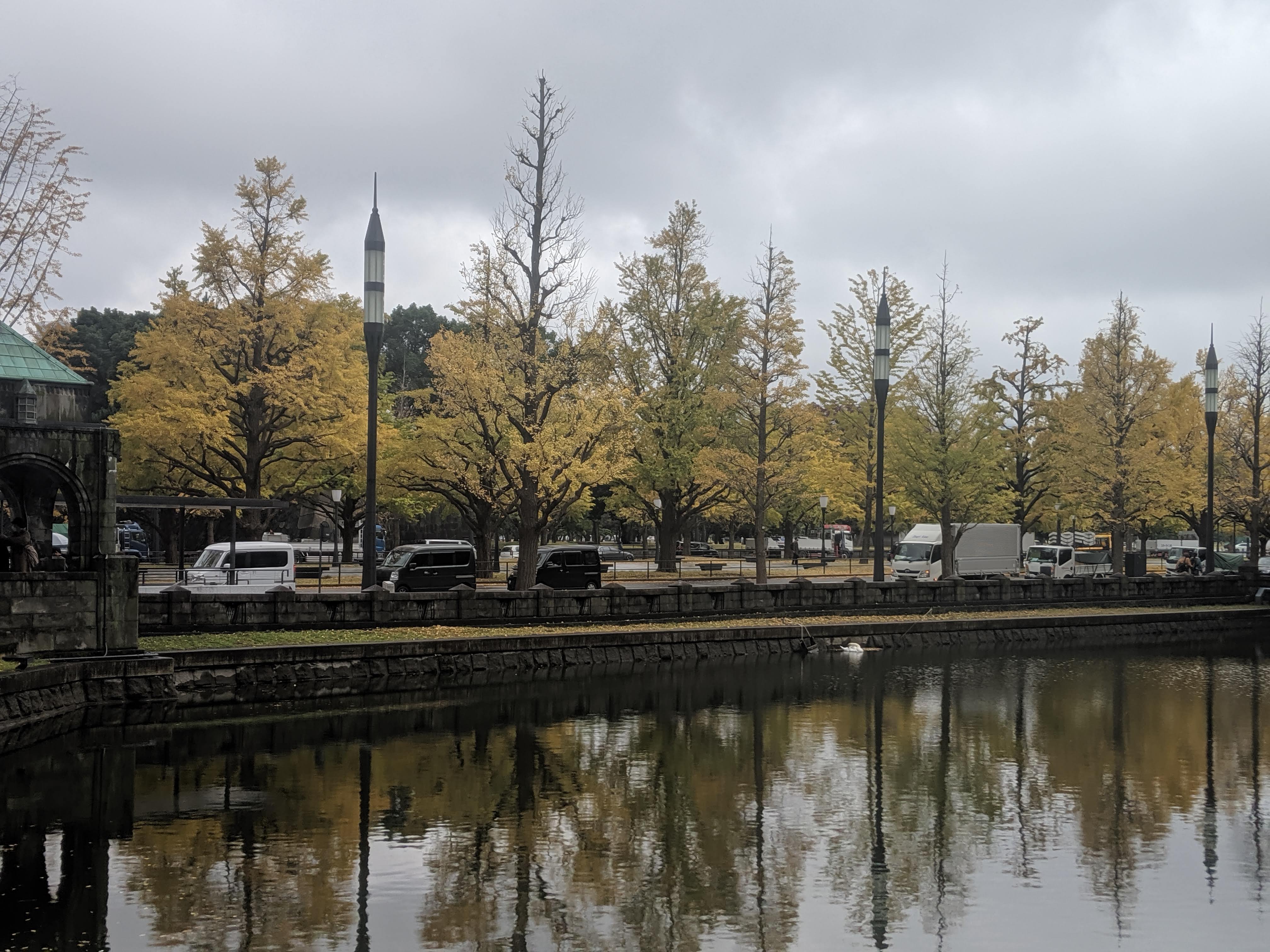
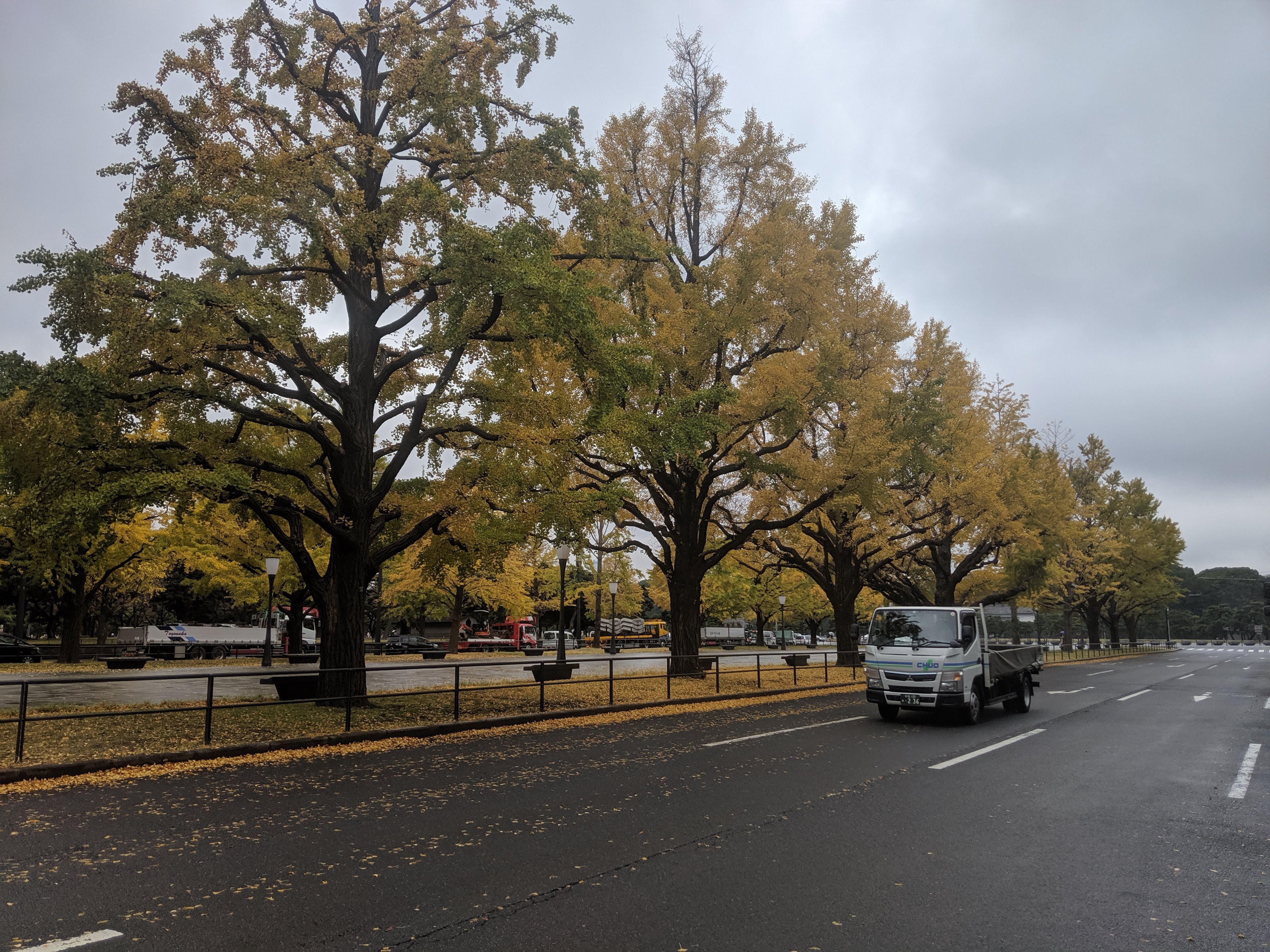
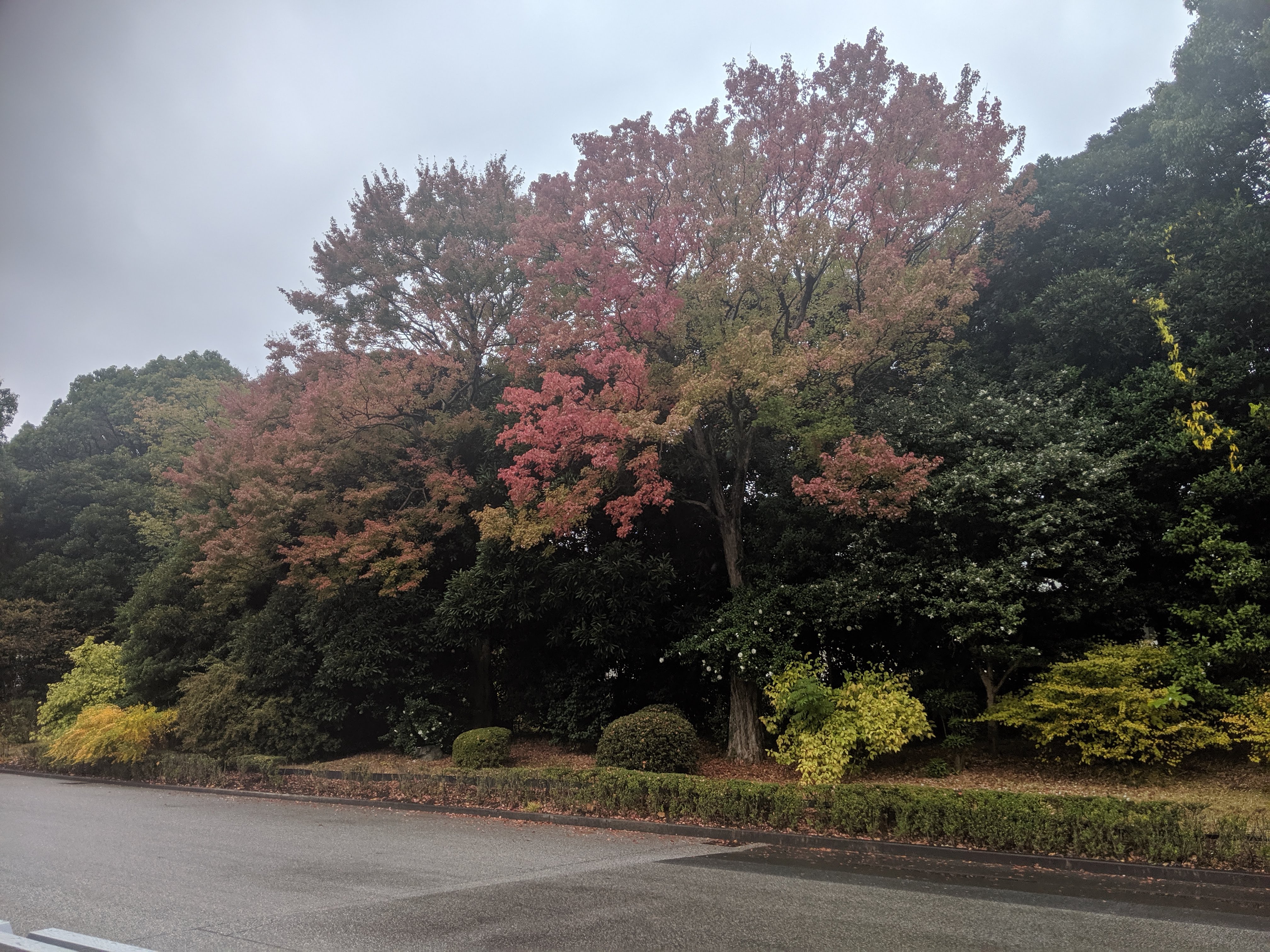
(5) Avenue of Gingko trees in the outer garden of Meiji shrine (Jingu Gaien):
The avenue of Gingko trees is one of the most famous autumn leaf color viewing spots in Tokyo.
About 150 gingko trees were planted at the first time in 1923 lined both sides of the avenue where the 400 meters long golden arch grand.


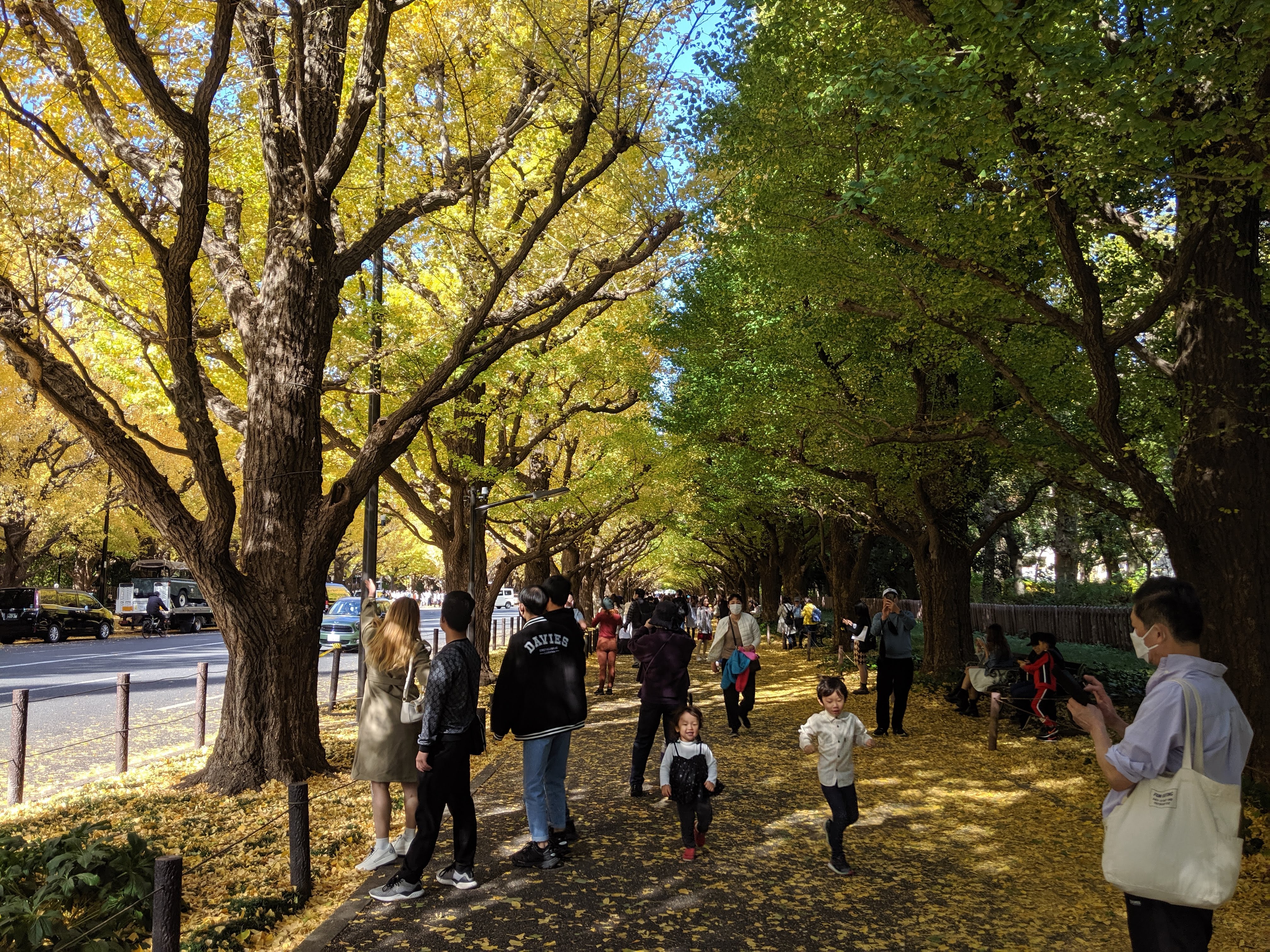
(6) Rikugien Gardens:
This garden was laid out by an influential feudal load who was very close to Tokugawa shogunate of the fifth Shogun. The garden became the property of Iwasaki Yataro, who founded the Mitsubishi financial conglomerate in the Meiji period (1868 – 1912). Later in 1938, the garden was opened as a public garden own by Tokyo.
Rikugien garden is a typical traditional strolling-type landscape garden and the representative of feudal load garden. You can see large central pond with islands surrounded by artificial hills and dense groves of trees. The trails winding around the garden and several teahouses are located.
In Autumn leaves season, about 400 numbers of maple, about 560 numbers of ginkgo and so-on are planted on everywhere in the park with mountains and ponds.
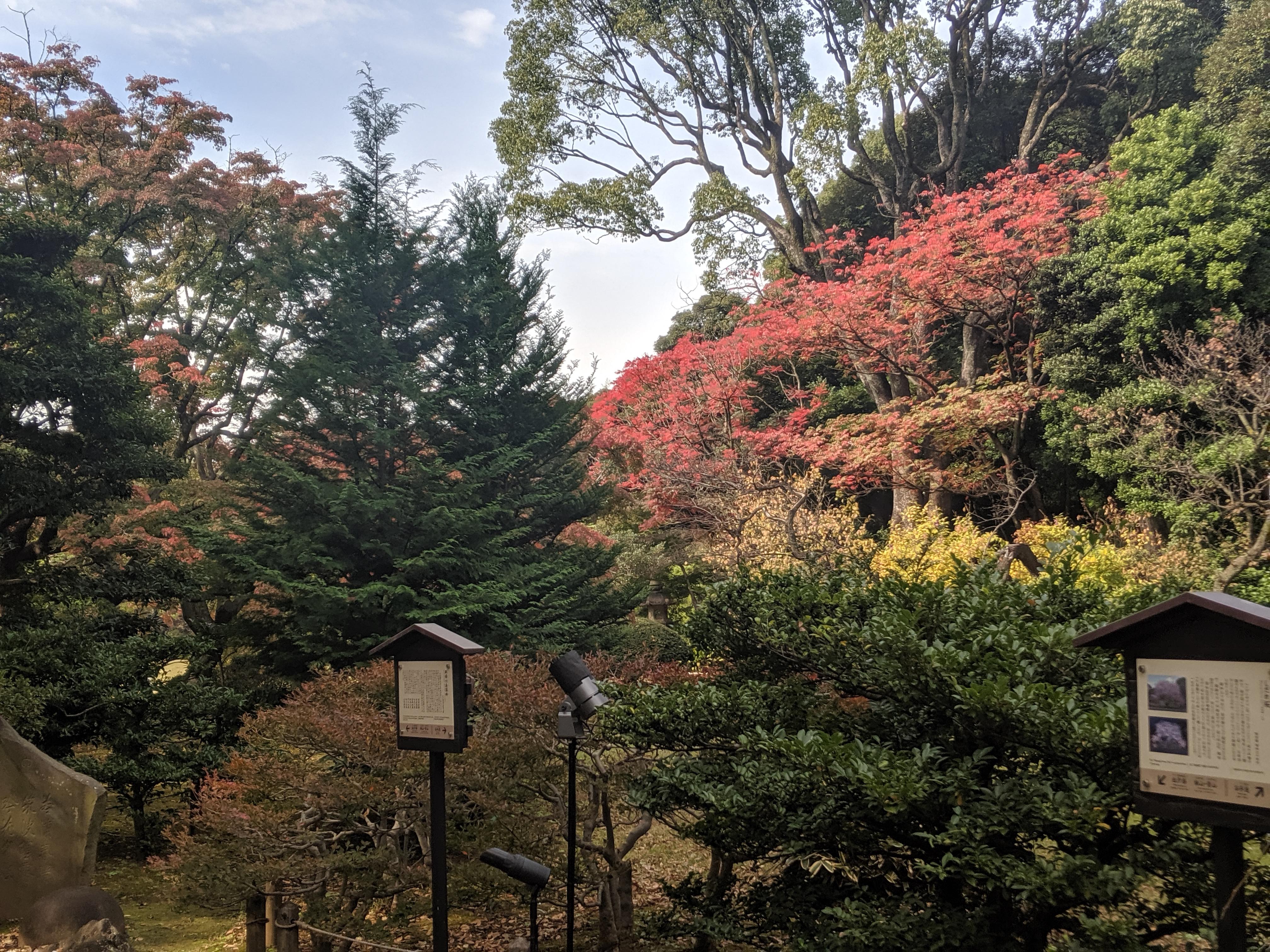



(7) Kyu-Furukawa Garden:
This garden used to belong to Mutsu Munemitsu who was a politician and diplomat in Meiji era (1868 – 1912). The current building was constructed in 1917 by Furukawa family. Ownership was transferred to Tokyo Metropolitan Government and was opened to the general public as Tokyo Metropolitan Garden in 1956. This garden was registered as a Cultural property of Tokyo. This garden contains three main features such as a Western style residence built on a small hill, a Japanese style garden created with a pond in the lowlands and a western style rose garden located on a slope and on the lower grounds.
From the middle of November to the beginning of December, about 220 number of maples are dying the garden. You can enjoy the bright red, yellow and green contrast in the garden from the observatory and the surroundings of Western-style buildings.
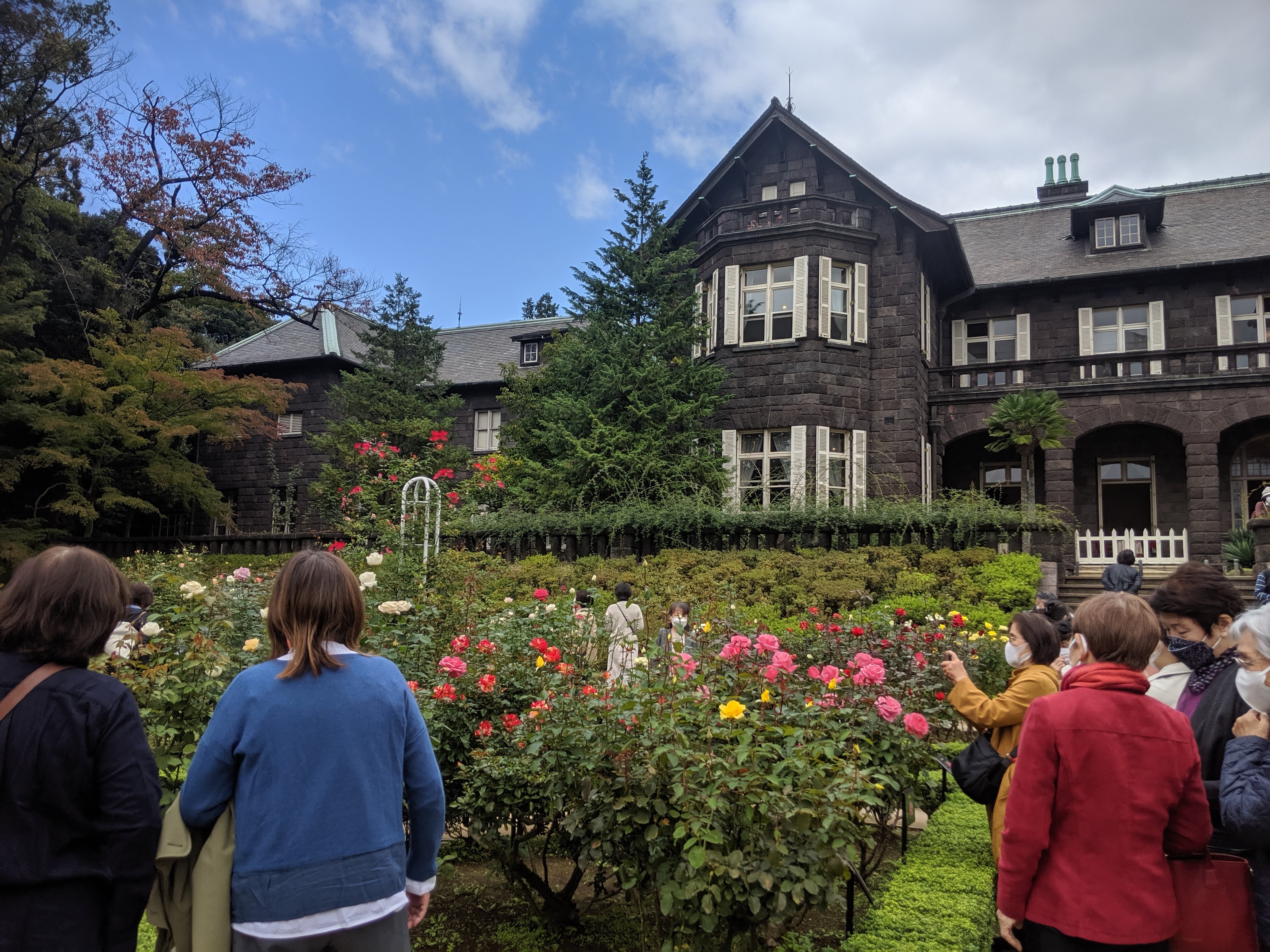
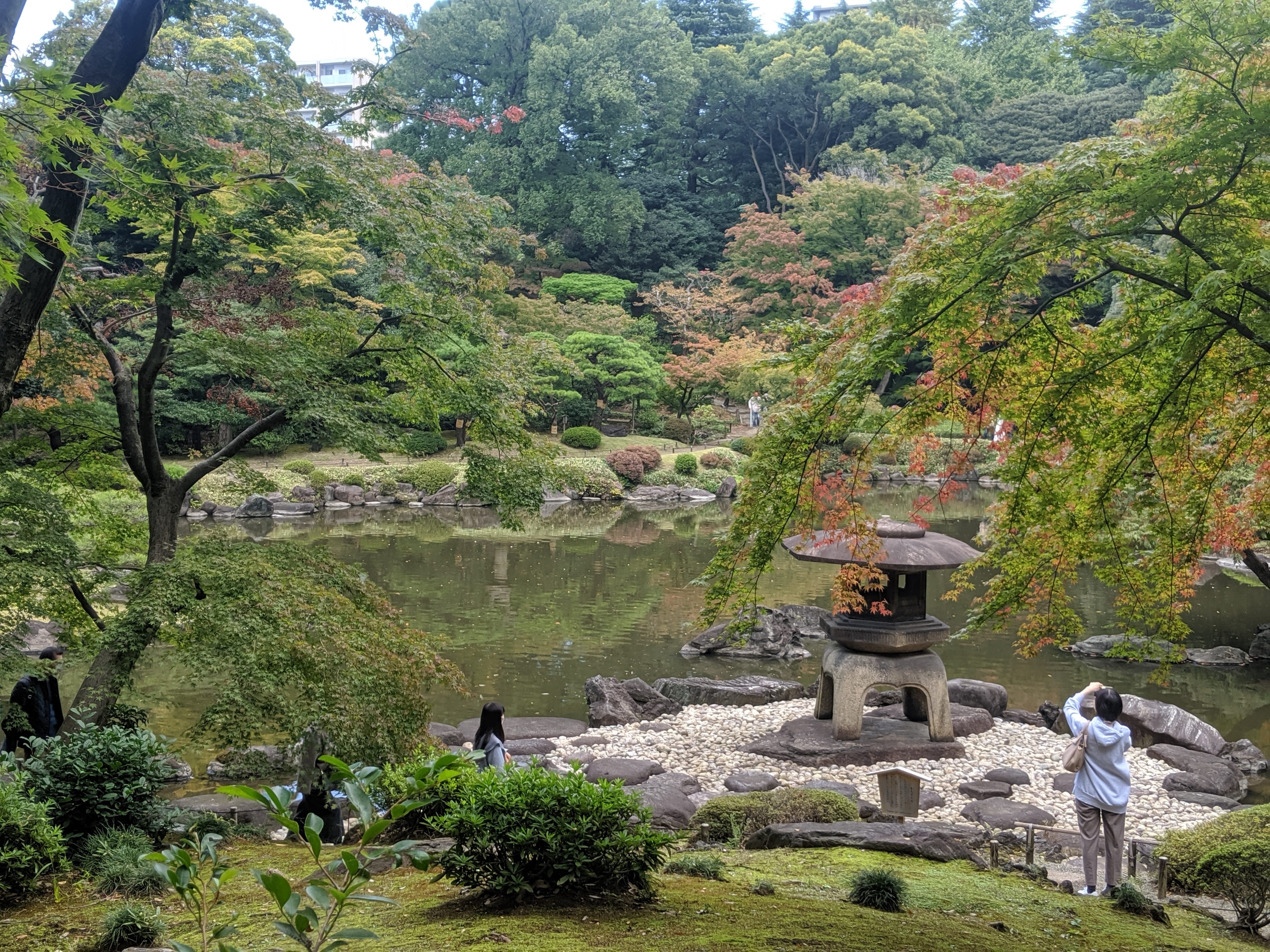
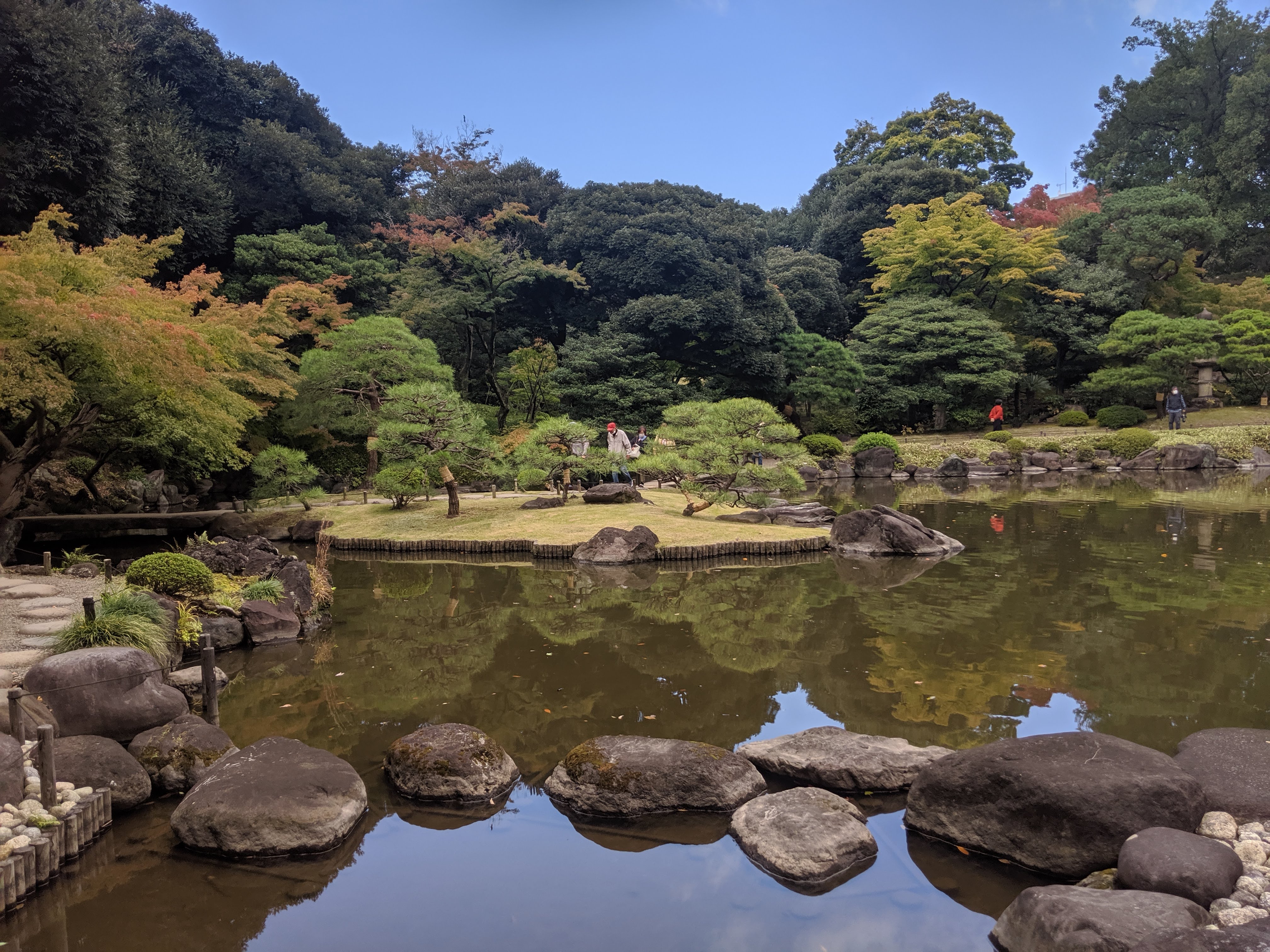
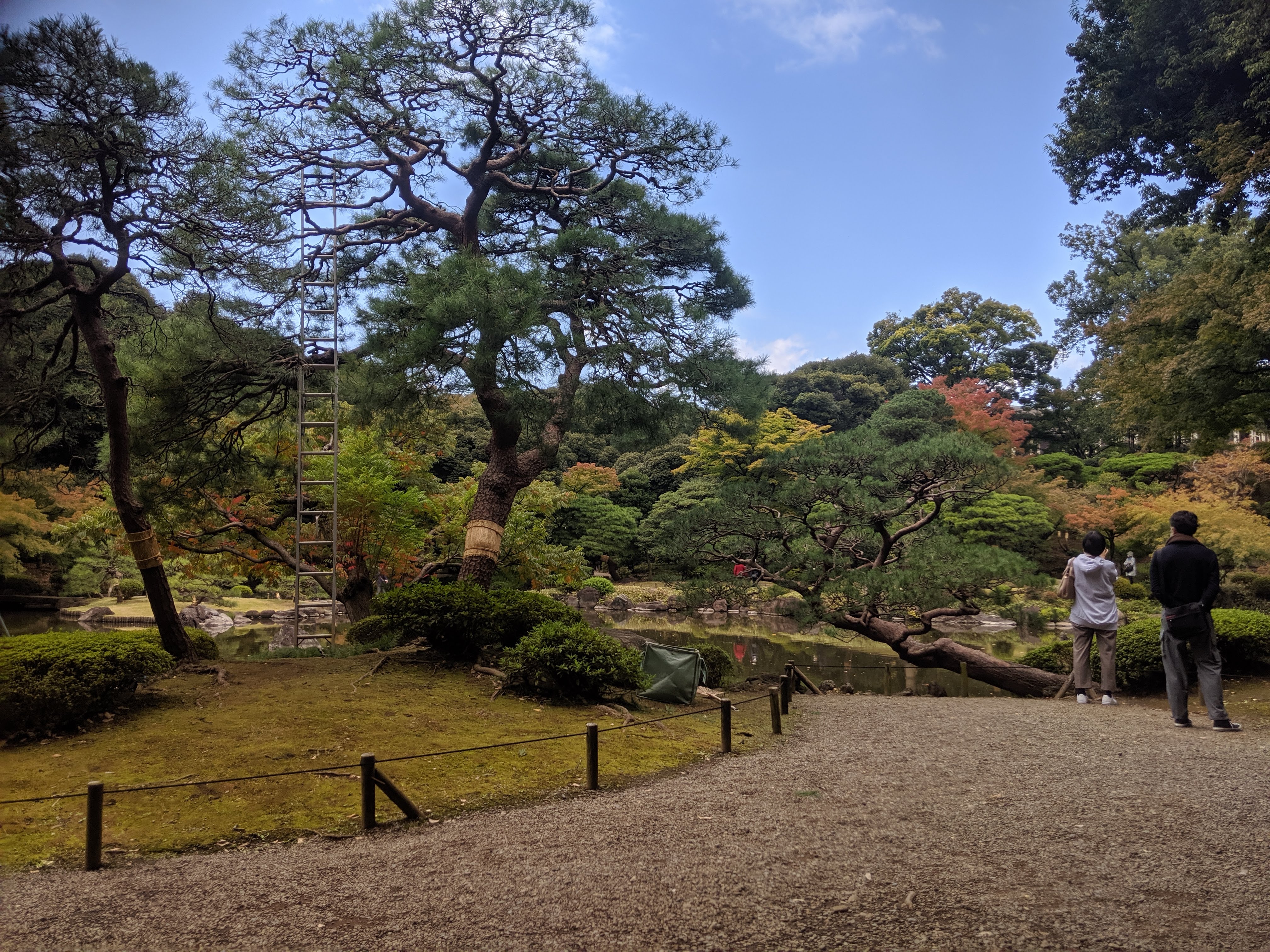
(8) Shinjuku Gyoen:
This garden was completed as the Shinjuku Imperial garden in 1906. The garden was rebuilt after World war 2 in 1949 as a National garden and opened to the general public.
This garden consists od three different types of gardens including a traditional Japanese-strolling type landscape garden with winding paths around the pond, a French format garden with beautiful symmetric design and an English Landscape garden with spacious grass lawns. This garden is one of the best Autumn leaves spots in Tokyo. You can see the autumn leaves of ginkgo and maple in any places such as Momiji Mountain, Japanese Garden, Hahanoko no Mori and so-on.
